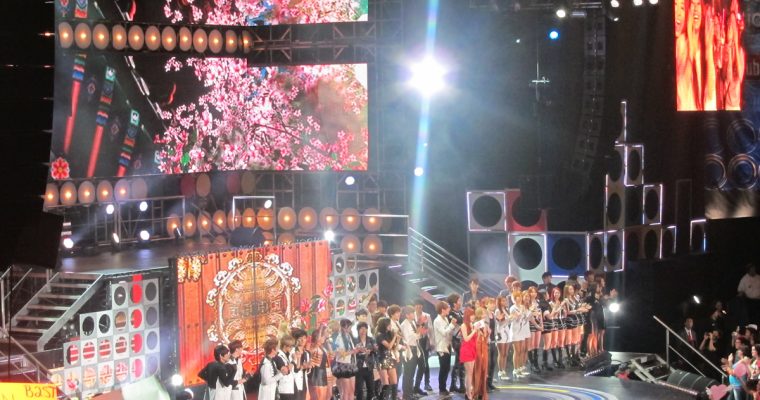When I was in high school, I was really into Kpop. All the girls were super cute! I wasn’t a big fan of the boy bands though, they all seemed a bit scrawny, and sometimes I really couldn’t tell they were men. By the time I went to my first Kpop concert, I was already quite over the whole idolizing entertainer thing. But since the concert was free (thanks Google), I mustered my remaining star chasing energy and joined the massive crowd of mostly Asian teenagers at Shoreline Amphitheatre. Since we did not line at at 4AM to get the best seat in the house, I and my fellow thirty something year old girlfriends sat way in the back. I don’t think it made much of a different really, since I could never tell the members of these massive bands apart anyway, even if we could see their faces.
There wasn’t anything super special about the event, but I thought I would take the opportunity to rant about the interesting phenomenon of pop groups in Asia, based on my very limited personal (and outdated) experience. I don’t know exactly when this trend started, but some time during the 90s and 2000s, these giant groups of consisting of members who appear to have very little personal differentiators started emerging (see below). The Jpop group AKB48, for example, had up to 130 members at one point! Kpop is not far behind, with its 98 person Produce 101 group. Even if you don’t count these ultra-large groups, the average size of Jpop/Kpop groups are still higher than the west, or China and Taiwan.
I’m baffled by these groups’ popularity, because I, personally, would have a hard time choosing just one of these cute girls to love and follow. But apparently that is not an issue for their target market, since with this many choices, you can find at least one cute girl to love and follow. For the company, they can easily mass produce merchandise for each one of the girls, and divide them up for performances to maximize profits. For the girls, it’s not that easy for any of them to become solo artists, so they are happy to just be a part of the group.
I was thinking that something like this would never be able to fly in the US. The idea of individuality runs too deep, and no one who wants to be a performing artist would be content with being one of 100 undifferentiated members of a group. But then again, maybe I’m wrong. It would be interesting to see such an experiment in a Western market 🙂



Leave a Reply